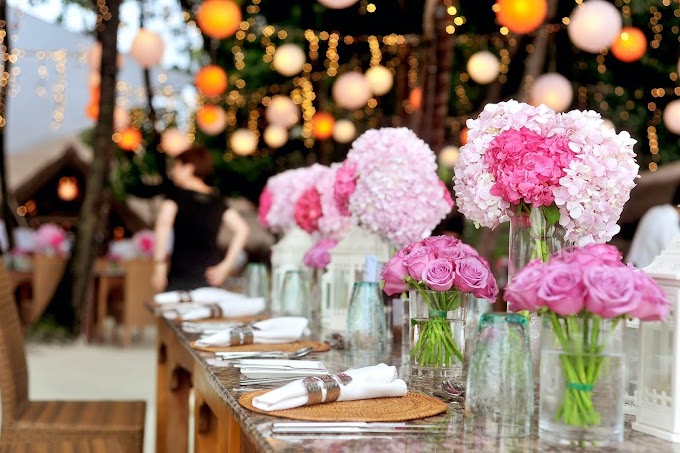Have you seen the recent trend for dramatic interiors with geometric patterns, naturalistic motifs and muted colours, frequently in chrome finishes? These furnishings and interiors are frequently seen on television, during the Academy Awards and in the most recent design magazines. Perhaps you're thinking to yourself, "How could my interiors look like that?" The answer is simple: Art Deco furniture is the name given to this design style. You may find these in an antique shop around Sydney.
Art Deco was a new style movement that began in Paris in the early twentieth century and aspired to reflect a post-war society. It was intended to instil optimism, joy and hope for the future. It is a style that encompasses all of these characteristics: elegance, exquisite workmanship and eccentric accents.
Every original Art Deco piece has a story to tell. Perfect symmetry, a plethora of mirrors, rare and expensive wood and above all, luxury are all present. With their sleek, linear appearance and geometric characteristics, the Chrysler Building and Rockefeller Center, two legendary New York City skyscrapers, are examples of Art Deco style architecture.
Genuine Art Deco furniture can be difficult to distinguish nowadays, especially if you are unfamiliar with the style. Many merchants will use the terms to describe anything that looks even remotely like true Art Deco, so be careful who you buy from.
Continue reading to learn how to tell if a piece of furniture is genuine from this era and how to avoid scams and fakes.
- TypesChairs, cupboards, coffee tables and beds were all part of the Art Deco style of French furniture. So, these lovely objects may be found all over a person's home, performing several functions while also contributing to space's overall elegance. At the same time, Art Deco introduced a high level of quality to its creations, ensuring that they would remain for years to come, adorning homes and offices.Cabinets were often built of exotic woods like Macassar ebony, bird's eye maple or burled oak and were large and robust. Beds were typically enormous and made of wood with metal accents. They could contain intricate themes from ancient Mayan, Aztec and Egyptian cultures, depending on the creator.The cocktail table with a glass top and metallic legs is the most iconic piece of furniture from the Art Deco era. This magnificent piece of Art Deco furniture would be the focal point of the room, attracting attention and eliciting comments about the entire design.
- MaterialsWood, lacquer, marble and metal are all common materials in Art Deco furniture. Some designer pieces may have plastic accents or bold animal skin, which was a sign of complete richness in the past. The goal was for you to appreciate the geometric and strong colours and let their beauty shine in your house or office.Any wooden Art Deco piece of furniture will be made of exotic wood. This not only emphasises the amount of effort that went into these designs, but also ensures their long-term viability. If the drawers show traces of plywood or chipboard, you're not looking at authentic Art Deco furniture.
- PolishMirror-like surfaces were made using polished metal and lacquer, as well as glass. The furniture's glossy sheen is perhaps the most distinguishing element of a true Art Deco design. If there isn't a glossy finish on the object, it is possible that it isn't an authentic Art Deco artwork.
- OriginalityYou must be able to tell the difference between a true Art Deco style of furniture and a fake one in order to prevent frauds and counterfeits.Because Art Deco objects aren't considered antiques, they have a high value, which is reflected in their prices. Instead, consider the piece's overall quality as well as any distinguishing features that would identify it as an Art Deco piece.Details, motifs, animal prints and inlaid materials like ivory and ebony, as well as sleek, reflecting surfaces, should all be considered. Find out who the designer is if you can and request any paperwork linked to the furniture from the vendor of the antique shop in Sydney to confirm its origin.
It can assist you in determining when the piece was created, as well as if it is a genuine Art Deco piece or a forgery. If you have any reservations or inquiries, be open to investigating another piece rather than making a risky buy.
Finally, inspect the furniture's condition. Chipping, damage, dents or replacement parts should all be looked for. If you decide to purchase Art Deco furniture, be sure it is in fantastic shape. For example, if you discover major damage on an original Art Deco item, it may not be worth the money to buy it.









 Erika Rhein, the contributing author and the professional blogger by profession. With years of experience, I now focus on writing blogs on varied niches. Being a research enthusiast, I like to provide my readers with the useful and informative articles on the different topics they are looking for. I aim to create a difference through my writing.
Erika Rhein, the contributing author and the professional blogger by profession. With years of experience, I now focus on writing blogs on varied niches. Being a research enthusiast, I like to provide my readers with the useful and informative articles on the different topics they are looking for. I aim to create a difference through my writing.
0 Comments